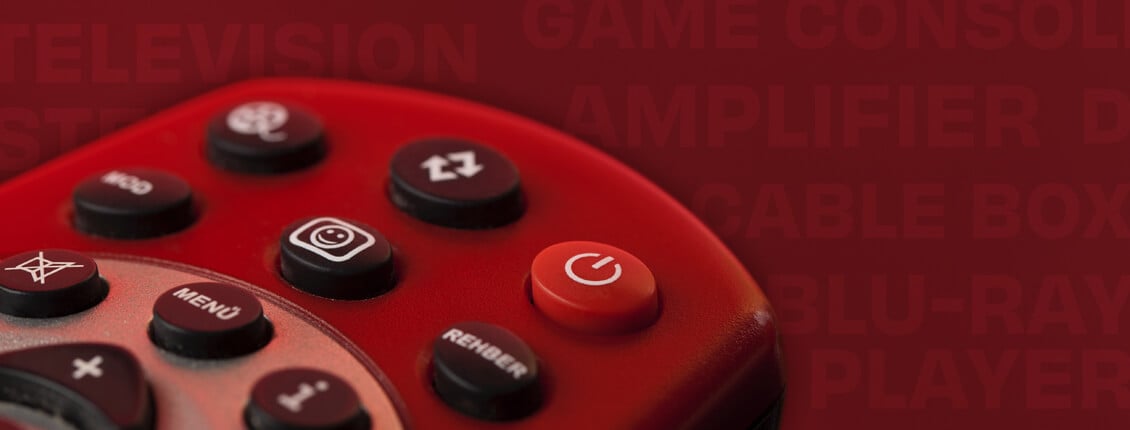
Remote controls for consumer electronic products have been around for a while. First-generation wireless TV remotes used ultrasonic tones. Housewives of the era discovered that, much to their amusement, their vacuum cleaners sometimes generated frequencies that turned TVs on or off! Today, infrared, Bluetooth, RF, IP, and voice control all vie for a piece of the remote pie. What about an IR Repeater system?
When to use an IR repeater system
Today, a typical home theater setup consists of a TV, cable, or satellite receiver, a streaming device connected to Wi-Fi such as an Amazon Fire Stick or Google Chromecast, and a game console or Blu-ray player. Some remotes operate off of Wi-Fi, too, but most of these have an IR sensor that communicates with its individual remote. That’s a lot of remotes to juggle.
A universal remote would seem to be the obvious solution. However, if the electronics are tucked away in a cabinet or placed in a different room than the TV, a universal remote won’t work. Its signal needs to be in line of sight with the sensors and an IR remote extender solves that problem, but there can still be installation issues.
6 IR roadblock irritations
Hiccups come with the territory. There are solutions, but not all infrared repeater systems on the market effectively deal with every issue.
- The carrier frequency spreads used for electronic components. Not all devices use an identical frequency.
Solution: Emitters need to be able to work both 30 kHz to 43 kHz and 44 kHz to 60 kHz spreads, the 2 most frequently used spectrums. The newest RCMM protocol operates on 36 kHz.
- Light sources can generate interference with IR sensors. LED, LCD, plasma TVs, CFL lighting, and even daylight are potential troublemakers.
Solution: Emitters and the receiver need to be able to filter and adapt to ambient lighting conditions.
- Random, spurious, or very-high frequency signals of unknown origin.
Solution: The receiver needs to be able to block or filter weird signals and correct possible distorted signals.
- Tech shortcuts can compromise the accuracy of the precise carrier frequency required to operate the electronics.
Solution: Use of better-quality components and circuitry that identifies and removes unwanted noise and interference to generate a dead-on accurate signal transmission, without noise or distortion.
- Cheap materials and/or poor manufacturing tolerances used in kit components can affect performance, electronic and/or optical integrity and long-term reliability.
Solution: Use of ultra-high-quality electronic parts and materials and careful manufacturing processes up and down the system chain.
- Wireless IR and 2-Way IP systems have pitfalls of their own in terms of reliability.
Solution: For custom installers who want to avoid repeat calls, the use of hardwired, IR systems is recommended.
Not all IR systems are created equal
One of the best ways to avoid these common problems is to use a brand with an excellent reputation. Xantech Corporation has been in the IR repeater business a long time, as has Russound. Metra AV is also a well-respected brand in the industry. It’s worth the effort to research different brands to see what will work best for your customers. Petra carries IR receiver kits from all 3 companies.
Minimizing installation headaches
Petra sells both kits and components for IR receivers. Kits can work with all cable boxes and set-top boxes, including those with RCMM frequencies. The receivers eliminate false signals while the emitters are broadband to trigger a variety of components. Depending on your needs, you can save money by choosing products intelligently.
The devil is in the details
Most kits contain the IR receiver, connecting block, regulated power supply, and emitters. The range and size of these products can vary, but with a little research, you can pick the best kit for individual needs.
The takeaway
There are several companies that offer IR extender or repeater kits. Getting premium products from reliable brands will make installation much less of a headache, so your customers can get back to relaxing while watching their shows.
